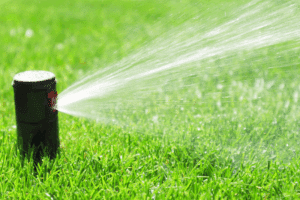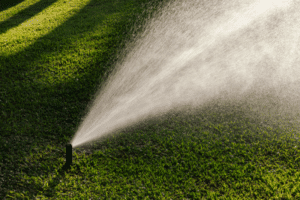If you’re searching for eco-friendly sprinkler maintenance tips, you’re already ahead of most homeowners in Cleveland. Keeping your lawn green doesn’t have to mean wasting water or running up your utility bill. Many residents want to maintain beautiful yards while still protecting the environment, but figuring out where to start can be confusing.
The good news is that with the right eco-friendly sprinkler maintenance tips, you can keep your system efficient, save money, and support a more sustainable home.

Why Eco-Friendly Sprinkler Maintenance Matters
Cleveland homeowners know how unpredictable the local weather can be, from heavy spring rains to dry summer weeks. Your sprinkler system plays a vital role in keeping your landscape healthy, but when it’s not maintained properly, it can waste thousands of gallons of water each year.
An inefficient sprinkler system can lead to:
- Uneven watering and dry patches
- Higher water bills
- Runoff that carries fertilizers and chemicals into storm drains
By following smart, eco-friendly sprinkler maintenance tips, you can prevent waste and protect your yard and the planet simultaneously.
1. Check for Leaks and Broken Sprinkler Heads
Even small leaks can lead to big water waste. A cracked pipe or a misaligned sprinkler head can easily spill gallons of water every time your system runs.
Walk through your yard once or twice a month and inspect each sprinkler head while the system is operating. Look for:
- Sprinklers spraying water onto sidewalks or driveways
- Puddles or wet spots that linger after watering
- Water pressure drops in certain zones
Eco-friendly tip: Replace broken or leaking sprinkler heads immediately. Select water-efficient nozzles that distribute water more evenly, reducing misting and helping to conserve water.
2. Adjust the Watering Schedule Seasonally
One of the easiest eco-friendly sprinkler maintenance tips is to match your watering schedule to Cleveland’s seasons. Many homeowners forget to adjust their settings, resulting in overwatering during cooler months.
Here’s a general rule of thumb:
- Spring: Water 2–3 times a week as grass starts growing.
- Summer: Increase frequency, but water early in the morning to reduce evaporation.
- Fall: Cut back watering as temperatures drop.
- Winter: Shut off and winterize your sprinkler system to prevent frozen pipes.
Eco-friendly tip: Install a smart sprinkler controller. These devices automatically adjust watering times based on local weather data, saving both water and effort.
3. Optimize Watering Efficiency
Not all sprinklers are created equal, and not all lawns need the same amount of water. To make your system as eco-friendly as possible:
- Use rotary nozzles or drip irrigation for garden beds.
- Group plants with similar watering needs in the same zone.
- Water deeply but less often to encourage stronger root growth.
Eco-friendly tip: Aim for about one inch of water per week, including rainfall. Use a simple rain gauge to track how much water your lawn actually receives.
4. Clean and Inspect Filters Regularly
Over time, dirt, debris, and minerals from Cleveland’s water can clog sprinkler filters. Clogged filters not only reduce performance but also strain the entire system.
Eco-friendly sprinkler maintenance tip:
- Turn off the water supply and remove the filter screens every few months.
- Rinse them thoroughly with water to remove buildup.
- Replace damaged filters immediately to keep the system running smoothly.
Clean filters help maintain consistent water flow, improve efficiency, and extend the lifespan of your sprinkler system.
5. Use Rain Sensors and Moisture Detectors
There’s no reason to water your lawn when it’s already raining, but many systems do exactly that. Installing rain sensors or soil moisture detectors ensures your sprinklers only run when your lawn actually needs it.
Rain sensors automatically shut off your sprinkler system when they detect rainfall, while soil sensors measure the moisture level in your lawn and prevent overwatering.
These simple devices can cut your water usage by up to 30%, making them one of the most effective eco-friendly sprinkler maintenance tips for Cleveland homeowners.
6. Schedule an Annual Professional Inspection
Even with the best DIY maintenance, a professional inspection once a year can make a huge difference. Local irrigation experts can identify hidden leaks, inefficient zones, or outdated components that might be wasting water.
During a professional tune-up, technicians can:
- Calibrate your sprinkler heads for even coverage
- Check for underground leaks
- Test controller settings
- Suggest eco-friendly upgrades
Eco-friendly tip: Consider asking your local sprinkler technician about WaterSense-certified products, which are designed for efficiency and sustainability.
7. Winterize Your Sprinkler System Properly
Cleveland’s freezing winters can cause sprinkler lines to burst if they aren’t winterized properly. This not only wastes water but also leads to expensive repairs.
Eco-friendly winterization steps:
- Shut off the main water supply.
- Drain all water from the sprinkler lines.
- Use compressed air to blow out any remaining moisture.
- Insulate the backflow preventer and exposed pipes.
Proper winterization protects your system from freeze damage, so you can start fresh in spring without leaks or waste.

Conclusion
Embracing these eco-friendly sprinkler maintenance tips is an easy way to care for your lawn while protecting the environment. Small changes like fixing leaks, adjusting your watering schedule, and using smart controllers can make a big impact on your water use and monthly bills.
If you need help keeping your sprinkler system efficient or want a professional inspection, reach out to your local irrigation experts in Cleveland. They can help fine-tune your system for peak performance, saving you time, money, and water all season long.
